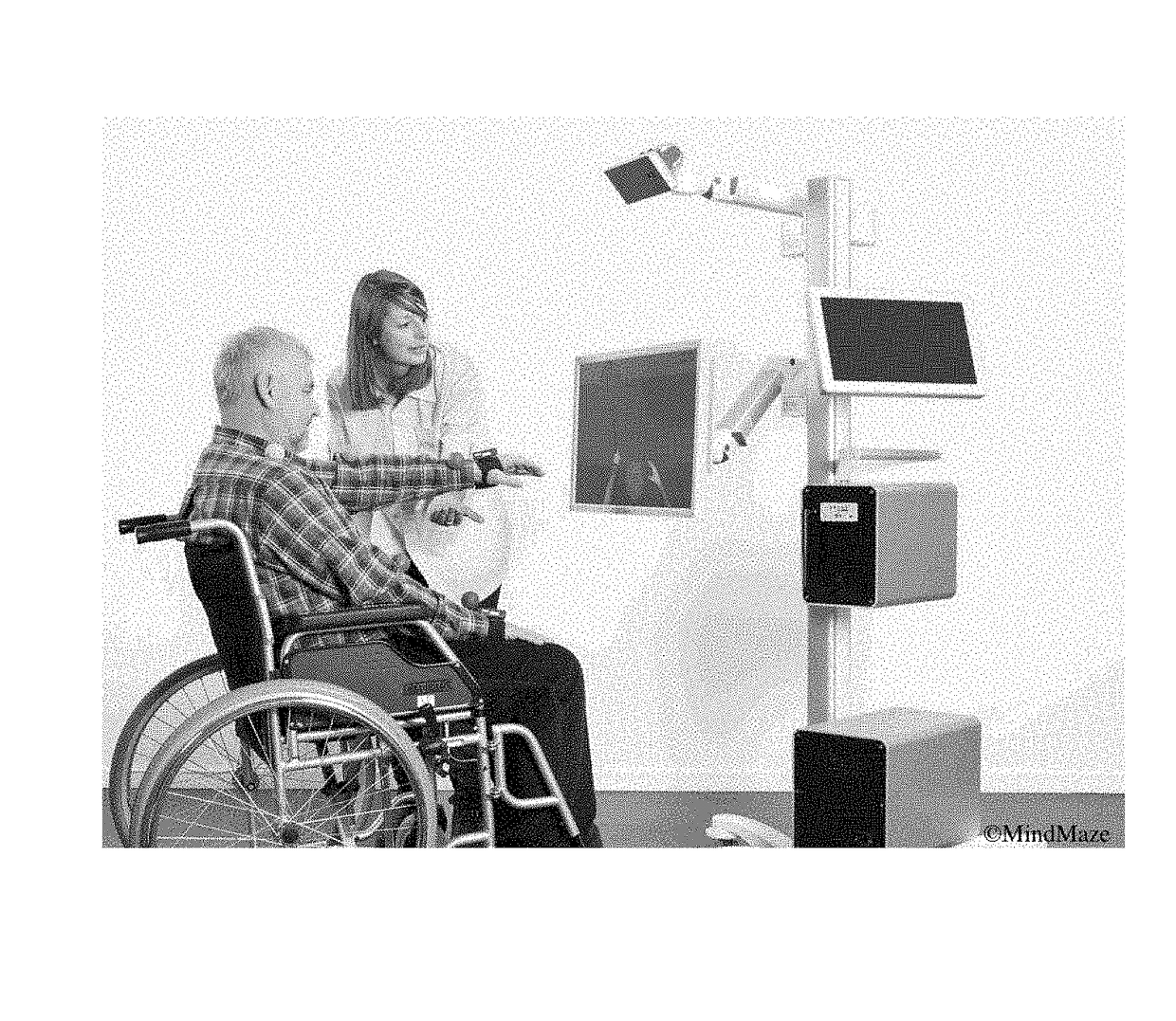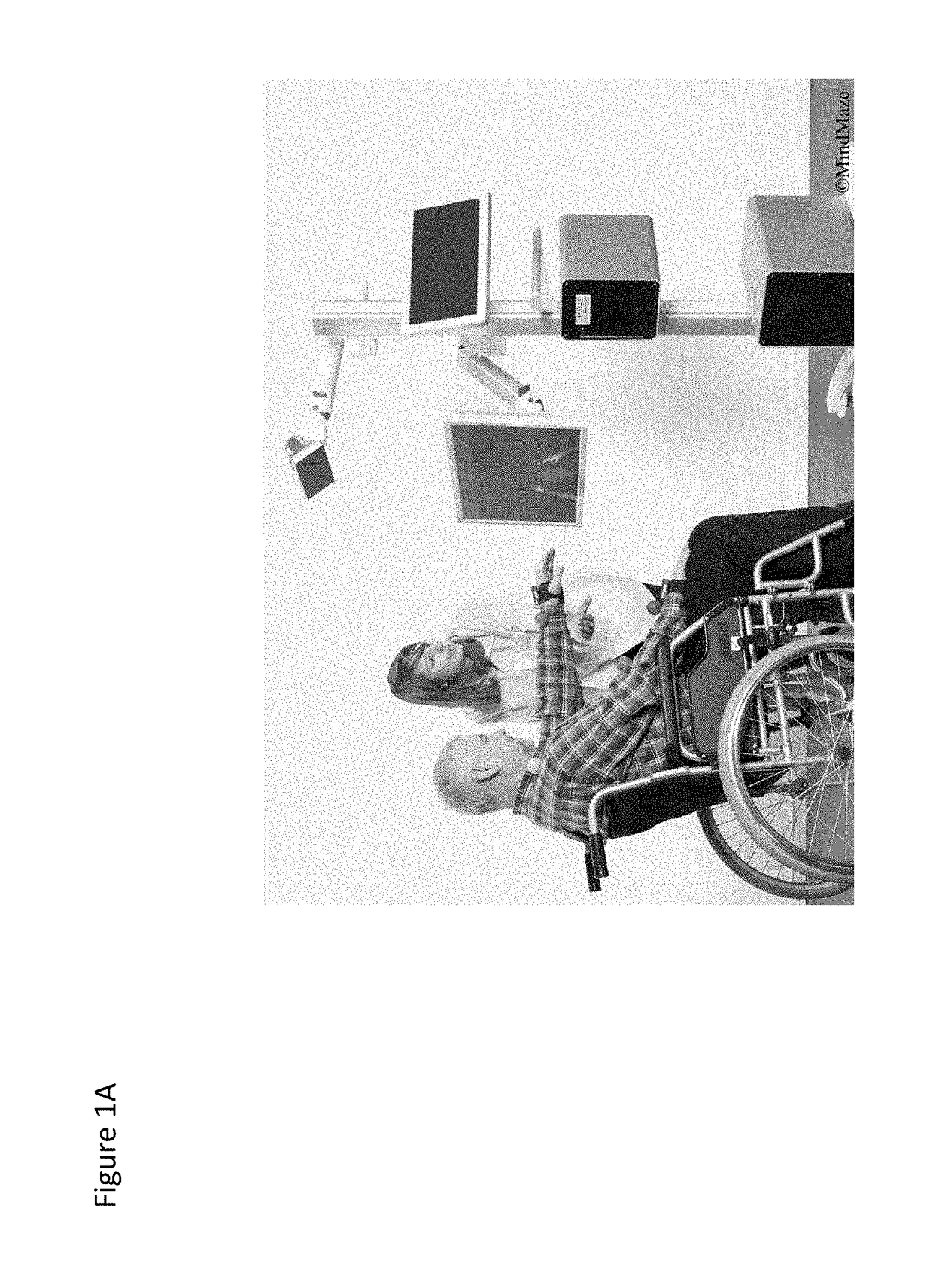System, method and apparatus for rehabilitation with tracking
a technology of rehabilitation and tracking, applied in the field of rehabilitation with tracking, can solve the problems of brain cell death, long-term physical disabilities and handicaps, decrease in movement function, and loss of independence, and achieve the effect of increasing the therapeutic opportunities for patients
- Summary
- Abstract
- Description
- Claims
- Application Information
AI Technical Summary
Benefits of technology
Problems solved by technology
Method used
Image
Examples
example 1
n™PRO in “Move-Rehab” Clinical Trial
[0083]FIG. 3 relates to a diagram of a clinical trial entitled “Move-Rehab”, currently underway, that is using the MindMotion™PRO system.
[0084]The Move-Rehab clinical trial protocol may be found at https: / / clinicaltrials.gov / ct2 / show / NCT02688413, and is described below briefly for clarity only. The trial is intended to show that exercises according to methods which embody the invention or which use systems in accordance with embodiments of the invention, including exercises embodied in MindMotion™PRO exercises, can deliver a higher degree of therapeutic intensity as compared to standard of care rehabilitative measures that are currently considered to be intensive. The standard of care protocol that is being used for the comparison is called GRASP (Graded Repetitive Arm Supplementary Program). GRASP is an arm and hand exercise program for stroke patients. Therapeutic intensity is a combination of the amount of time that a patient can spend during e...
example 2
n™PRO for Rehabilitation to Improve ADL
[0116]It is highly desirable to improve ADL for rehabilitation of patients, particularly for stroke victims. As noted in the Background, rehabilitation for such patients can be quite difficult, due to lack of necessary therapists and therapist resources to fully impact all patients.
[0117]The method described herein, which is described as being implemented with MindMotion™PRO but which may, in fact, be implemented with other systems and methods in accordance with embodiments of the invention as described herein, relates to a specific rehabilitation process that leads to an increase in the ability of the patient to perform ADL.
[0118]Part of the consideration relates to outcomes of specific motions that could lead to an improvement in ADL performance by the patient. These outcomes are listed below.
[0119]Tables 3 and 4 list desired outcomes that could be measured and improved by a system as described herein, upon interacting with the patient. RoM a...
example 3
n of Accuracy of MindMotion™PRO
[0140]The accuracy of the MindMotion™PRO was validated through experimental testing, which demonstrated that the MindMotion™PRO can track and measure movements with a high degree of accuracy.
[0141]Methods
[0142]A draw-wire encoder (Phidgets encoder ENC4104_0) with a 0.08 mm displacement resolution was used. A joining piece was 3D-printed to couple the marker to the encoder, and another one to screw to the encoder to be able to clamp the device to the table. Various tests were then performed, in terms of various movements that were performed:
[0143]1) at a natural pace and at the fastest pace the tester could move.
[0144]2) parallel to the camera close, far, and central on the testing table and perpendicular to the camera right, left and central on the testing table
[0145]3) with a camera tilted downwards at two different angles
[0146]4) along the axes of the left arm movement assessment schema, as this represents the region of the movements subjects perform...
PUM
 Login to View More
Login to View More Abstract
Description
Claims
Application Information
 Login to View More
Login to View More - R&D
- Intellectual Property
- Life Sciences
- Materials
- Tech Scout
- Unparalleled Data Quality
- Higher Quality Content
- 60% Fewer Hallucinations
Browse by: Latest US Patents, China's latest patents, Technical Efficacy Thesaurus, Application Domain, Technology Topic, Popular Technical Reports.
© 2025 PatSnap. All rights reserved.Legal|Privacy policy|Modern Slavery Act Transparency Statement|Sitemap|About US| Contact US: help@patsnap.com



